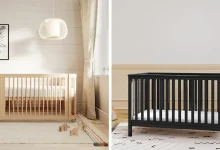Top Ways to Find Floor Plans of My House Without Paying Extra

If you’ve ever thought, “How can I find floor plans of my house without paying a professional?” — you’re not alone. Whether you’re planning a renovation, needing accurate layouts for a sale, or simply curious about your home’s structure, getting access to your floor plans can make all the difference. The good news is that you don’t always have to spend money to find them.
In many cases, your home’s original floor plans may already exist somewhere in your paperwork, local records, or online. This article explores the top free or low-cost methods to help you Find Floor plans of my house—without hiring a surveyor or architect.
Why You Might Need Floor Plans
Floor plans are detailed diagrams that show the layout, dimensions, and key features of your home, including walls, rooms, doors, windows, and sometimes even electrical and plumbing lines. These are essential tools for:
-
Planning home renovations or expansions
-
Discussing repairs with contractors
-
Ensuring compliance with zoning regulations
-
Selling or listing your property
-
Understanding structural limitations
Having a floor plan allows you to avoid guesswork and proceed with clarity, whether you’re working with professionals or doing a DIY home improvement project.
Start with Your Property Documents
One of the most overlooked places to find your house’s floor plan is in the documents you already have. When you purchased the home, a range of materials may have been handed over by the real estate agent, lender, or the previous owner.
Closing Documents or Real Estate Folder
Look through the packet you received at closing. Sometimes real estate listings include a basic floor layout or brochures that contain floor plans. These are often accurate enough for general reference and could be exactly what you need.
Mortgage Appraisal Report
During the loan process, lenders typically request a home appraisal. Some appraisal reports contain sketches or floor plans, especially if the home is complex or custom-built. Request a copy of the appraisal report from your lender or mortgage broker if you don’t already have one.
Homeowners Insurance Records
Insurance companies often require basic layouts of a home to calculate risk or replacement cost. Call your insurer and ask if they retain a diagram of your home in their files—you may be surprised to find a floor plan included in their property assessment.
Contact Your Local Building or Planning Department
Most municipalities require homeowners or builders to submit detailed floor plans when applying for construction permits. If your home was built in the last few decades—or if it underwent renovations—it’s likely that your local city or county has those plans on file.
How to Request Building Plans
Search for your local building department or planning office online. You may find a records request form on their website or instructions for how to submit a request in person. Provide your full address, parcel number (if available), and proof of ownership to improve your chances of accessing the documents.
What to Expect
While not every jurisdiction retains old records, many keep plans for 10 to 20 years. If available, you might receive full construction drawings that include floor layouts, elevation drawings, and mechanical schematics—all at no charge or for a small reproduction fee.
Check with the County Assessor or Recorder’s Office
Local property tax offices often have records related to property layouts, especially for square footage assessments or historical value comparisons. While these aren’t architectural-grade drawings, they can offer rough sketches of floor layouts and dimensions.
Visit the county assessor’s website and look for your property using your name, parcel ID, or address. Some counties allow you to download property sketches directly from their database at no cost.
Look Up Old Real Estate Listings
If your house has been listed for sale in the past decade, there’s a good chance that online listings still exist—and may include floor plans or virtual tours.
Real Estate Platforms to Search
Websites like:
-
Zillow
-
Realtor.com
-
Redfin
-
Trulia
These platforms often archive previous listings, including images, room measurements, and sometimes downloadable floor plan PDFs. Simply search for your home address, and if the property was previously listed, you may uncover helpful layout visuals.
Use the Wayback Machine
If the listing has been removed, try using the Internet Archive’s Wayback Machine to find a saved version of the page. Enter the listing URL or property address and check if an archived snapshot contains the floor plan.
Reach Out to the Builder or Developer
If your house is part of a housing development or was built by a known homebuilder, the original floor plans may still be accessible through the builder’s records.
How to Contact Them
Identify the builder’s name from your property records or by asking neighbors who bought around the same time. Contact their customer service or warranty department and ask if they retain copies of past floor plans. Builders often reuse designs, so they may be able to match your address to a standard model.
What You Might Receive
You may receive a PDF or a printed brochure showing the model floor plan and options that were available. Even if it’s not a perfect match (due to customizations), it’s often good enough for general planning and space visualization.
Ask the Previous Homeowners
If you’re not the first owner, the previous occupants may still have paper copies or digital files of the floor plans. Reach out through your real estate agent or by sending a letter if you know their forwarding address.
What to Say
Be courteous and explain why you need the floor plans (e.g., planning a remodel). Many former owners are happy to pass along blueprints, design drawings, or brochures they kept from the original builder.
Visit Local Libraries or Archives
For older homes or historically significant properties, local libraries, universities, or historical societies may retain architectural archives or public records that include house plans.
What to Search
Search for:
-
Historic building registries
-
Local architectural archives
-
University special collections
-
City directories or permit logs
Even if you don’t find your exact house, you might uncover plans for similar homes built in the same era or neighborhood, which can help reconstruct your layout with reasonable accuracy.
Use Free Mobile Apps to Recreate a Basic Plan
If all else fails and you can’t find existing plans, there are mobile apps that allow you to scan your space and generate floor layouts. Many of these tools are free or offer limited use without subscription.
Popular Free Apps
-
Magicplan (iOS/Android): Offers a few free exports and uses your phone’s camera to map out rooms.
-
RoomScan Pro (iOS): Walk around the room and let the app create a layout using augmented reality.
-
Floor Plan Creator (Android/Web): Draw your own plan using measurements, or use AR scanning.
-
SmartPlan (iOS/Android): Uses LiDAR (if available on your phone) to create accurate floor plans.
These DIY plans may not be perfect for permitting or resale, but they’re often accurate enough for planning furniture layouts, remodels, or basic renovations.
Combine Multiple Sources for Best Results
Sometimes, one source won’t give you the complete picture. For example, a rough tax assessor’s sketch combined with a past real estate listing and measurements from a floor plan app can help you reconstruct a usable diagram of your home.
Once you gather what you can:
-
Print or scan all documents
-
Label each room clearly
-
Verify measurements where possible using a tape measure or laser measurer
-
Store everything digitally for future reference
Final Thoughts
Finding the floor plans of your house without spending money is possible—it just takes a bit of resourcefulness. From digging through your old real estate paperwork to accessing free online tools and government records, there are many no-cost ways to locate or recreate your home’s layout.
By exploring the methods outlined above, you can avoid unnecessary expenses and still get the information you need to confidently plan your next home improvement project, sale, or design upgrade. Don’t let missing blueprints hold you back—start your search today and uncover your home’s hidden design blueprint.









